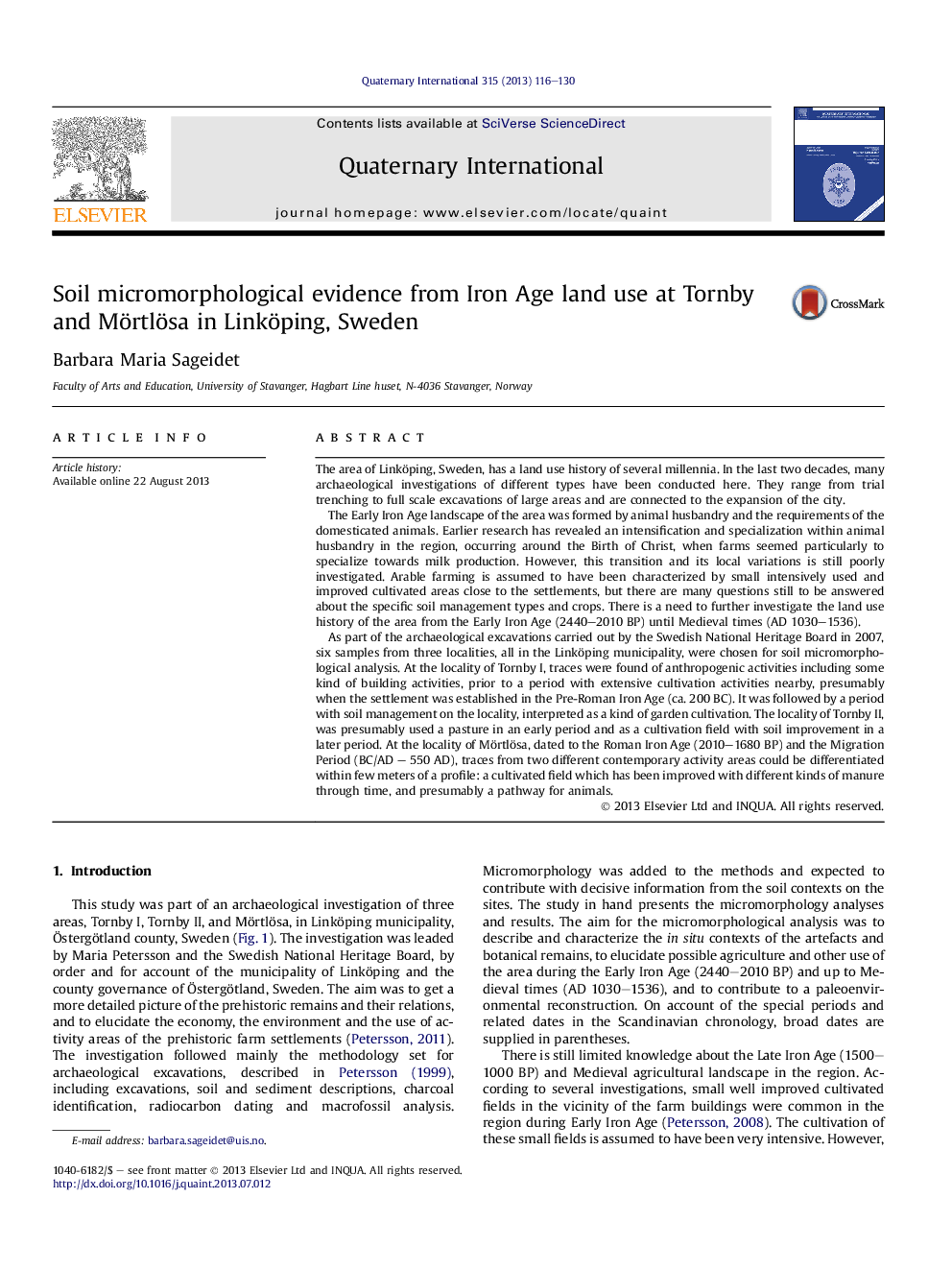| Article ID | Journal | Published Year | Pages | File Type |
|---|---|---|---|---|
| 1041879 | Quaternary International | 2013 | 15 Pages |
The area of Linköping, Sweden, has a land use history of several millennia. In the last two decades, many archaeological investigations of different types have been conducted here. They range from trial trenching to full scale excavations of large areas and are connected to the expansion of the city.The Early Iron Age landscape of the area was formed by animal husbandry and the requirements of the domesticated animals. Earlier research has revealed an intensification and specialization within animal husbandry in the region, occurring around the Birth of Christ, when farms seemed particularly to specialize towards milk production. However, this transition and its local variations is still poorly investigated. Arable farming is assumed to have been characterized by small intensively used and improved cultivated areas close to the settlements, but there are many questions still to be answered about the specific soil management types and crops. There is a need to further investigate the land use history of the area from the Early Iron Age (2440–2010 BP) until Medieval times (AD 1030–1536).As part of the archaeological excavations carried out by the Swedish National Heritage Board in 2007, six samples from three localities, all in the Linköping municipality, were chosen for soil micromorphological analysis. At the locality of Tornby I, traces were found of anthropogenic activities including some kind of building activities, prior to a period with extensive cultivation activities nearby, presumably when the settlement was established in the Pre-Roman Iron Age (ca. 200 BC). It was followed by a period with soil management on the locality, interpreted as a kind of garden cultivation. The locality of Tornby II, was presumably used a pasture in an early period and as a cultivation field with soil improvement in a later period. At the locality of Mörtlösa, dated to the Roman Iron Age (2010–1680 BP) and the Migration Period (BC/AD – 550 AD), traces from two different contemporary activity areas could be differentiated within few meters of a profile: a cultivated field which has been improved with different kinds of manure through time, and presumably a pathway for animals.
